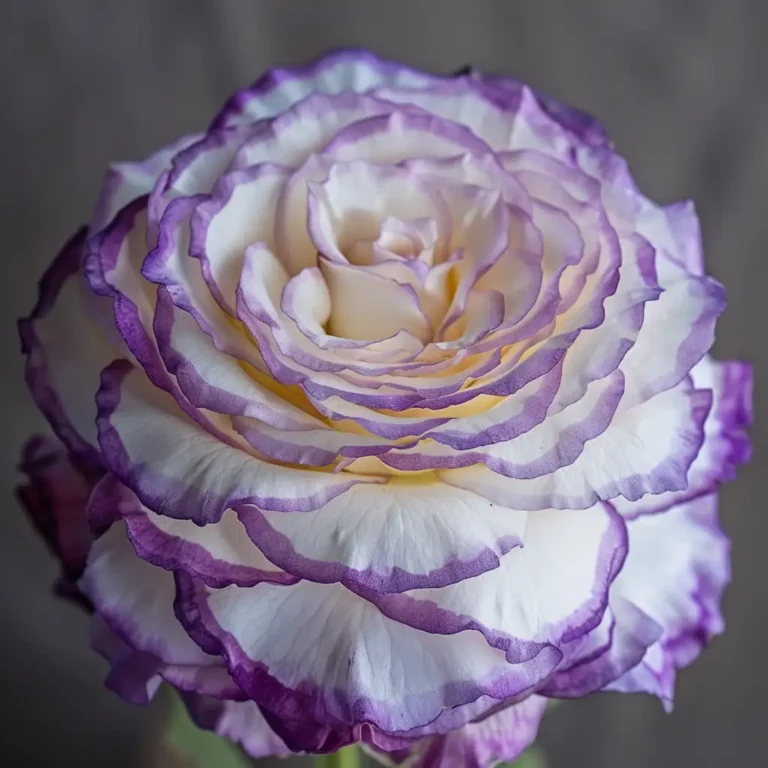Introduction
The Lavender Lace Rose is a miniature rose variety that has captivated gardeners and rose enthusiasts with its delicate beauty and enchanting fragrance. Known for its unique lavender hue and lacy petals, this rose is a standout addition to any garden. In this article, we’ll explore the history, characteristics, and cultivation requirements of the Lavender Lace Rose, along with tips for maintaining and caring for this exquisite plant.
History and Origin
The Lavender Lace Rose has a fascinating history that traces back to its development by skilled rose breeders. This miniature rose variety was created to combine the charm of traditional roses with the compact size suitable for smaller gardens and containers. Over the years, it has gained popularity among gardeners for its distinctive color and resilience.
Characteristics and Description
The Lavender Lace Rose is renowned for its:
- Color: A unique and captivating lavender hue that stands out in any garden.
- Size: As a miniature rose, it typically grows to a height of 12-18 inches.
- Shape: Delicate, lacy petals that give it an elegant appearance.
- Growth Habits: Compact and bushy, making it ideal for small spaces and containers.
- Blooming Season: Blooms profusely throughout the growing season, offering continuous beauty.
- Fragrance: A pleasant, mild fragrance that adds to its appeal.
Cultivation Requirements
Growing Lavender Lace Rose requires understanding its specific needs. Here are some key points to ensure successful cultivation:
- Soil Type and Preparation: Prefers well-draining, fertile soil with a slightly acidic pH.
- Planting Guidelines: Plant in a location that receives at least 6 hours of sunlight daily.
- Watering Needs: Keep the soil consistently moist, but avoid waterlogging.
- Sunlight Requirements: Full sun is essential for optimal growth and blooming.
- Fertilization and Nutrients: Use a balanced rose fertilizer to promote healthy growth.
Maintenance and Care
Maintaining the health and beauty of your Lavender Lace Rose involves regular care:
- Pruning Techniques: Prune in early spring to shape the plant and remove dead or diseased wood.
- Pest and Disease Control: Monitor for common rose pests like aphids and spider mites, and treat promptly.
- Winter Care: Provide protection from harsh winter conditions by mulching around the base.
- Common Issues and Solutions: Address issues like black spot and powdery mildew with appropriate treatments.
Uses and Benefits
The Lavender Lace Rose offers several benefits and uses in the garden:
- Landscaping Uses: Ideal for borders, containers, and small garden spaces.
- Aesthetic and Decorative Purposes: Adds a touch of elegance and color to any garden setting.
- Benefits to Pollinators: Attracts bees and other pollinators, supporting garden biodiversity.
- Cut Flower Arrangements: Makes a lovely addition to floral arrangements due to its unique color and form.
Varieties and Hybrids
There are several varieties of the Lavender Lace Rose, each with its unique features:
- Different Varieties: Explore various Lavender Lace Rose varieties to find the one that suits your garden.
- Comparison with Other Roses: Understand how Lavender Lace Rose compares with other miniature rose varieties.
- Notable Hybrids: Learn about hybrids that share similar characteristics and their benefits.
FAQs
How to propagate Lavender Lace Rose?
Propagation can be done through cuttings or layering, ensuring the new plants retain the characteristics of the parent plant.
What are the common diseases affecting Lavender Lace Rose?
Common diseases include black spot, powdery mildew, and rust. Regular monitoring and prompt treatment are essential.
How to enhance the blooming of Lavender Lace Rose?
Ensure proper sunlight, adequate watering, and regular fertilization to promote prolific blooming.
Can Lavender Lace Rose grow in pots?
Yes, it is well-suited for container gardening, making it ideal for patios and small gardens.
What is the best fertilizer for Lavender Lace Rose?
A balanced rose fertilizer with equal parts nitrogen, phosphorus, and potassium is recommended.
Expert Tips
To maximize the growth and blooming of your Lavender Lace Rose, consider these expert tips:
- Tips from Professional Gardeners: Regular deadheading can encourage more blooms.
- Common Mistakes to Avoid: Avoid overwatering and ensure good air circulation to prevent disease.
- Best Practices: Mulching helps retain soil moisture and suppress weeds.
Conclusion
In summary, the Lavender Lace Rose is a stunning addition to any garden, offering unique beauty and charm. By understanding its history, characteristics, and care requirements, you can successfully cultivate this miniature rose and enjoy its continuous blooms and delightful fragrance.

